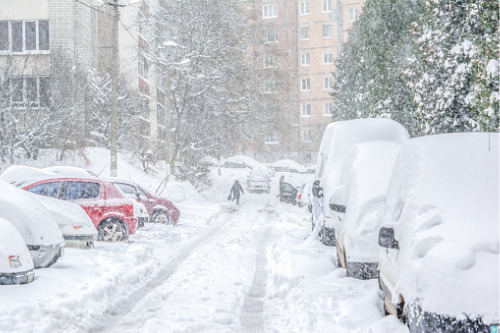

Texas is still shaking from one of the most damaging natural disasters in recent history. In February 2021, the southern state and its surrounding neighbors fell prey to Winter Storm Uri – a deep freeze event that saw temperatures plummet as low as -18C. The storm toppled the Texas electric grid, leaving thousands of homes and businesses without power and triggering a record-breaking number of burst pipe and ice dam claims because people simply couldn’t heat their properties.
Both the predicted insured and uninsured loss figures are eye watering. According to Enki Research disaster modeler Chuck Watson, the deep freeze could cost as much as $90 billion in total losses, with $35 billion of that stemming from physical damages and $20 billion covered by insurance. Approximately six weeks after the event, most insurers and modelers were predicting approximately $18 billion-$20 billion in insured losses from the event.
Read next: Losses for Texas deep freeze revealed
“This really was an unprecedented event,” said Mike Stahl, CMO at Servpro, the largest restoration company in the United States. Servpro had hundreds of storm crews on the ground throughout Winter Storm Uri, meeting record-breaking demand from customers. Stahl commented: “In our 50-year history, Winter Storm Uri produced our number one volume day, as well as our number two, four, seven and 10 volume days. That’s a strong indication of just how significant this event was.”
The situation in Texas was unique because it was a winter storm coupled with a major power failure. The power outages aggravated the impacts of the deep freeze, causing a surge of burst pipe claims in several major Texas cities, including Houston and Dallas. Generally speaking, most homeowners’ insurance and standard commercial property policies will cover water damages caused by burst pipes – as long as they burst through sudden and unforeseen events, as was the case with Winter Storm Uri.
“This is another unprecedented factor about the Texas deep freeze event,” said Stahl. “It’s more of an insured event than some other catastrophic weather events. For example, when there’s a hurricane, there are often a lot of flood claims that are not covered by homeowners’ policies or commercial property policies. Insureds have to hold separate flood insurance policies to make those claims. But the vast majority of claims to come out of this event were frozen pipes bursting, which are generally covered in standard policies.”
Restoration companies like Servpro, and the insurance companies that they partner with, not only had to deal with record claims volume during Winter Storm Uri, but they also had to navigate additional challenges posed by the COVID-19 pandemic.
“When there’s a catastrophic storm event, restoration companies and the insurance industry have to bring in capacity from all over the country,” explained Stahl. “The local capacity is there to deal with a normal variation of volume or customer demand, but not the extreme variation that you get in catastrophic events.
“Bringing in extra capacity was challenging with the Texas deep freeze. Not only did we have COVID-related travel advisories, quarantine rules, and health and safety guidelines to follow, but we were also contending with the fact that the winter storm hit other areas of the country. Most nearby states - including Kansas, Missouri, Oklahoma, Tennessee – were covered in snow. They were already seeing excessive customer demand and had less capacity to send to Texas. A storm is always a capacity challenge relative to the demand.”
